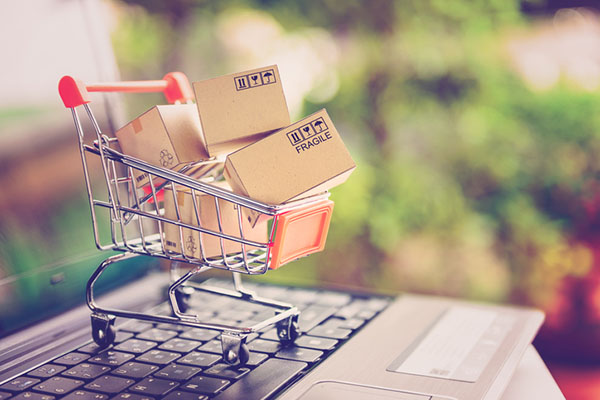Pitney Bowes Parcel Shipping Index highlights ongoing strong impact of e-commerce
The Pitney Bowes Shipping Index, which was recently issued by Stamford, Ct.-based Pitney Bowes, a global technology services provider of commerce solutions powering billions of transactions, showed how despite various economic and pandemic-influenced market conditions, the United States parcel market remains on a more-than-solid growth path, even when compared to pre-pandemic predictions and estimates.
The Pitney Bowes Parcel Shipping Index measures parcel volume and spend for business-to-business, business-to-consumer, consumer-to-business and consumer consigned shipments with weight up to 31.5kg (70 pounds) across Australia, Brazil, Canada, China, France, Germany, India, Italy, Japan, Norway, Sweden, the United Kingdom and the United States.
The index is replete with key data points for the United States parcel market, in 2022, including:
- U.S. parcel volumes were down 2%, at 21.2 billion pieces, in 2022, compared to 2021’s 21.7 billion pieces, which topped pre-pandemic forecasts by 1.1 billion packages, with the firm forecasting U.S. parcel volume to come in at 28 billion by 2028, a 5% CAGR from 2023-2028;
- 674 parcels were generated every second, coming in at 58 million per day;
- an average of 162 parcels were shipped per household; and
- carrier revenues—at $198 billion—saw a 6.5% annual increase over 2021’s $186 billion, with UPS at $73 billion (a 5.5% annual increase), FedEx at $65 billion (a 5% annual increase), USPS at $31 billion (which was flat), Amazon Logistics at $24 billion (which was flat), and “others” combined revenue at $4 billion, up 0.1%;
For market share by parcel volume, USPS was even at 32%, UPS was even at 24%, Amazon Logistics was up 1%, at 23%, FedEx was even at 19%, as were “others” at 2%. And by revenue, UPS and FedEx led the wat, at 37% and 37%, respectively, with each company posting a 4% annual gain. UPS was down 1%, to 16%, with Amazon Logistics up 1%, to 12%, and “others” flat at 2%.
In an interview, Vijay Ramachandran, Pitney Bowes, Vice President, GTM Enablement + Experience, explained that the 6.5% annual increase in carrier revenues, from 2021 to 2022, speaks to the fact that increased e-commerce activity is not going away. A lot of what is changing, he explained, has to with why people are shopping online.
“It is not so much what drove online shopping before the pandemic,” he said. “The 6.5% increase is nominally higher than what we expected but only because we expected the capacity constraint situation to resolve itself slightly earlier than it did. The pricing reflects a prolonged challenge around capacity. It is sort of this domino effect in that capacity would continue to be challenged because e-commerce had staying power longer than 2020 to 2021 and stayed through 2022.”
From a volume perspective, he said the 21.2 billion parcels delivered in 2022 is a full year ahead of Pitney Bowes’ pre-pandemic expectations, which speaks to the “stickiness” of e-commerce adoption and creates what he called a “control of demand,” for parcel capacity, which a lot of carriers have.
Ramachandran observed that this higher demand for a certain set of well-known carriers implies that there is a nervousness, or hesitation, on the part of shippers to diversify beyond well-known carriers—and is subsequently what is driving the price difference.
“It is a lack of comfort, trust, and maybe even credibility from the plethora of new carriers that have emerged over the last two or three years,” he said. “That is why you are seeing the larger carriers drive a price premium. It is because it is the devil you know. And the challenge you are going to see with shippers this year is both the large carriers and public companies are not going to be in a position where they can backtrack on pricing. Are shippers going to tread water into diversification or are they going to stay and pay the higher rates that are demanded from the major carriers? It comes back to name recognition and trust.”
With e-commerce not reverting to the mean, as was expected, coupled with parcel volumes remaining higher than forecasted, means shippers need to go and make thoughtful and purposeful decisions regarding what carriers they are going to work with one-to-two years ahead. And, for technological or process reasons, he said many shippers have not been able to diversify as much as they would have liked.
Looking ahead, the index pegs annual parcel volumes to climb to 28 billion in 2028, which would represent nearly a doubling of 2019’s 15.4 billion tally. Ramachandran noted that this speaks to how the reasons why people buy goods online are fundamentally shifting.
“2019 and prior to that, the Internet was this endless aisle,” he said. “If I could not buy something in a store, I would buy it on the Internet. This gave rise to a lot of niche brands in very tight categories, like sox, for example. That goes back to the idea of this endless aisle. The pandemic taught us that necessities can be purchased online, whether it is furniture or groceries or other things. Anybody that built a business model on just being niche is finding that is not enough. Consumer sentiment has changed. They want to buy online; that is obvious. Before you saw niche products competing with stores and delivering very fast but now people are buying online because they want to buy online and not because they can’t find the item in the store. If they need it right away, they will go to the store, but that is a fallback.”













